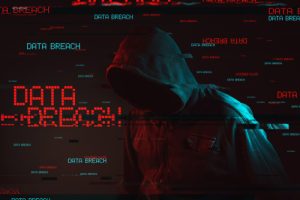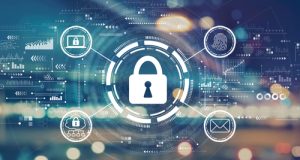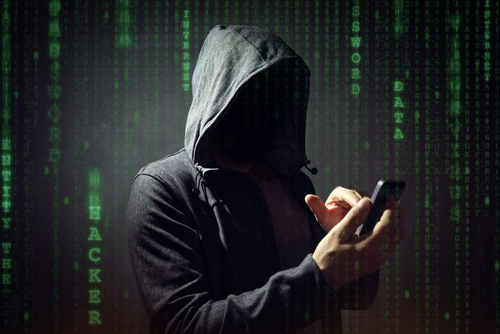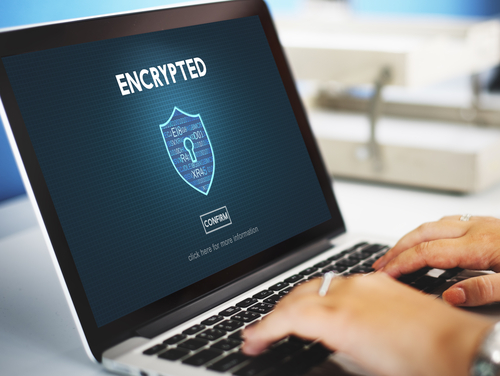It’s every company’s worst nightmare- logging into the database one morning to find customer data strewn across the digital landscape. Passwords, payment info, addresses, and everything are out there for the taking after a massive data breach.
As the CEO, you’ve made promises to customers about protecting their privacy and securing their data, and a breach would be catastrophic, destroying trust and damaging the brand’s reputation. Let’s show you how to tighten the seatbelts on your company’s data security and strengthen your organization’s defenses from the inside out.

What Is a Data Breach?
A data breach occurs when cybercriminals, sometimes called hackers, manage to access private data like names, addresses, phone numbers, and even bank account and financial information without permission.
Hackers try different ways to sneak into company computer networks or websites. Common methods include phishing scams via email or malicious links and malware infections that allow hackers to gain unauthorized access to sensitive files and servers.
Once inside, they might be able to see or steal customers’ personal data that was being stored there, like social security numbers, credit cards, or health records. The stolen information is then either sold on the dark web or used by the hackers directly for things like identity theft.
They could open bank accounts or credit cards in someone’s name without their knowledge. Data breaches put people’s privacy and security at serious risk.
What Causes Data Breaches
Like defenders trying to protect a castle, companies have many walls, gates, and guards to help shield sensitive customer details. However, just as castles sometimes fall victim to invaders, certain lapses or weaknesses threaten even the most secure networks.
Let’s take a closer look at some of the most common causes of data breaches to help explain how private information can end up in the wrong hands.
Cyber Attacks
Cyber attacks are significant security threats for any company collecting customers’ personal information. These are malicious attempts by hackers or cybercriminal groups to access a company’s sensitive computer systems and networks without authorization.
Unfortunately, due to vulnerabilities or human errors, sometimes cyber attackers succeed in infiltrating even large, well-established businesses. Some common infiltration methods used in cyber attacks on companies include phishing scams and malware infections.
Phishing occurs when hackers craft clever emails that try to trick employees into revealing passwords or downloading malware. Once on the network, malware like ransomware attacks or viruses can then spread rapidly between coworkers’ devices.
Human Error
While cybercriminals pose threats, unintentional human mistakes are another common cause of data breaches.
Even the most robust security is at risk from errors in judgment within an organization’s own workforce. Known as human error, these lapses highlight how businesses must also diligently train employees to avoid needless risks.
Some types of human error include employees falling victim to clever phishing scams, failing to use secure practices like enabling multi-factor authentication on accounts, or carelessly clicking unsafe links and attachments in emails.
This may inadvertently download malware infecting work devices.
Weak Security Measures
Even with solid defenses, lax security protocols grant unwelcome guests ways inside company systems. Weak security measures, such as insufficient precautions, frustrate even diligent staff efforts to block cyber threats.
From easily guessable passwords to missing firewalls, loopholes undermine protections. A major cause for concern is unchanged default passwords on routers, software, or employee accounts. Cybercriminals readily scan networks, hunting for systems using manufacturers’ basic codes.
Similarly, recycled or seldom refreshed credentials make it easy for attackers to conduct password cracking or data dumps from past breaches.
Insider Threats
External hackers might get much attention, but a serious risk might come from within your organization. With legitimate network access, insiders with personal grievances may intentionally or accidentally expose an organization.
Either way, the results can be damaging. Former employees who get fired or quit top the danger list. As ex-workers, they might still have access to passwords and systems that the company forgot to change.
Angry ex-staff could use this to steal files out of revenge or even pretend to be workers and cause chaos. Current staff needing money could also be a risk. A few may try to make easy cash by copying and selling top-secret customer lists or work plans online.
Unauthorized Access
Protecting sensitive data requires knowing who should and should not be accessing important computer systems and files. When unauthorized individuals gain entry where they don’t belong, it puts private details at risk of being stolen or misused.
It can happen in different ways. External hackers may find vulnerabilities like unpatched software or weak passwords, allowing them to sneak past security measures. Once in, they search networks for where information is stored, hoping to find exposed databases.
Third parties also must be closely monitored. Outsourced tech support, cleaning crews, or temporary workers with physical office access require supervision if they are near servers.
Third-Party Vulnerabilities
In the modern business world, companies often rely on outside companies called third parties to help with important tasks like processing customer payments, storing company files in the cloud, or sending customer shipments.
While teaming up can expand your company’s capabilities, it also multiplies your risk if these third parties don’t manage security as strongly. Third parties need strong security, too, or they could let hackers sneak in.
For example, if a company uses an app developer that doesn’t install updates fast, bad guys may find holes that have not yet been patched. Once in, they could grab customer lists the app company got from many businesses.
Sometimes, companies merge. But joining networks fast without checking their connections well gives hackers more chances to swim through and find private details.
Unsecured IoT Devices
As more “things” in our lives become connected to the internet, known as the Internet of Things or IoT, this expansion opens new opportunities for cybercriminals. IoT devices like security cameras, appliances, and sensors bring convenience and security risks if not configured carefully.
Hackers search online for IoT machines using default passwords and then take control. Once in, bad guys may put malware on the device to spy or use it to climb into a company’s whole network. This puts private files at risk.
Data Retention and Disposal
Proper handling of sensitive customer information does not end when data is no longer actively being used. In fact, even after files are old and not looked at much, they can still cause problems if not taken care of properly.
Companies need to be careful what they do with customer information when they’re done using it. Companies often accumulate troves of personal details over the years, such as names, addresses, purchase histories, and financial records.
But outdated backup tapes, decommissioned hard drives and discarded paper files that still contain such archived data can continue to attract thieves if they are not thoroughly wiped or destroyed.

How To Prevent Data Breaches In Your Company
Preventing private information from leaking requires teamwork across a business. Everyone must do their part to strengthen security so hackers can’t exploit weak spots. Some simple changes, such as the ones below, make a big difference in keeping customer and employee details safe.
Understand Your Data Assets
One of the most important things a company can do is know exactly what sensitive information they store and where it’s located. This is called understanding your data assets.
Over time, it’s easy to accumulate many customer records without realizing how much private details have spread across databases, files, and backups. But visibility into these data holdings is crucial in helping you protect them properly.
Companies should catalog all the types of information they collect, like addresses, credit cards, health records, and more. They should also map out where exactly these various data assets reside, such as networked drives, applications, cloud services, and offline backups.
Only then can they prioritize more sensitive material for stronger protection.
Train and Educate Your Employees
While technology and policies play important roles, a company’s workforce is often its first line of defense against digital threats. That’s why ongoing training and education of all staff is critical. Employees who understand security risks and protocols help block risks from inside and out.
Regular refreshers help everyone remember best practices over time. They can also take courses that teach secure cybersecurity habits like strong passwords, laptop protection while traveling, and recognizing phishing attacks.
In these lessons, you can also use realistic mock attacks to help them identify these social engineering tricks. Responsible data use and accidental sharing must also be covered during training. And clarifying what customer details are private versus public helps to reduce mistakes.
Secure Your Systems and Networks
Protecting the technologies that store and transmit sensitive data is vital for any company. To catch intrusions, all devices need updated virus protection, firewalls, and monitoring software. Regularly updating operating systems and applications promptly closes vulnerabilities before they get exploited.
Together, these basics block common cyber attacks and intrusion attempts. You can also use multi-factor authentication to add another layer of identity checking beyond just a password when accessing critical systems.
Authentication app prompts or separate login approvals on a different device reduce the risk of compromised accounts.
Implement Data Backup and Recovery
If private files ever get stolen by hackers, companies need a way to get them back safely. That’s where data backups come in. Regular copies of important information stored separately can help your business keep working even after a security incident.
There are different types of backups that work best for various situations. For example, copying to external hard drives stores files locally, but offsite is safer than on company networks. You can also store duplicates online in the “cloud” to protect against local disasters.
Tapes also work well for huge volume archives since they hold loads of gigabytes. You should also check that recovery from various backups is possible to test the process. Making sure files can be restored from numerous dates in the past proves that the copies were successful.
Monitor and Audit Access
It’s important for companies to watch who is looking at important files and systems. Checking your access logs can reveal any risks before damage happens. When a worker or program opens customer info, the details get recorded.
Patterns emerge over time, indicating normal behavior for each person’s job. However, any deviations, like fake login attempts, may signal troubles that require prompt fixes. Spot checks also help you analyze recent logins compared to usual actions.
Abnormal times, locations, or files opened should be probed. IT staff should also double-check that staff only see what they need to do their job and can’t peek elsewhere. This lowers the chances of mistakes or sneaky theft.
Test Your Defenses
Companies must make sure their security systems actually work. Just as firefighters practice evacuating a burning building, companies must practice testing their protections. A few ways companies can test their security include:
- Experts can do hacking tests where they pretend to be cybercriminals trying different sneaky tricks to get past passwords and into important files and systems. This helps companies find any cracks in their defenses that real hackers could take advantage of.
- Companies can also make fake attacks by sending mock phishing emails to employees to see who might click a link they shouldn’t. This teaches valuable lessons so they can improve their protection.
- Recovery tests can also be done, where IT will try restoring important files from backup storage to ensure the data can be retrieved in an emergency. Broken backups leave companies vulnerable if disaster strikes.
Leverage Data Breach Prevention Technology
Companies now have all sorts of special tech tools that can help protect customer information from being stolen. It’s important to use these data breach prevention technologies as part of a business’s security plan.
For example, antivirus software and firewalls help block hackers from sneaking into networks through weak spots. They act as guards, keeping unauthorized people out. Other tech watches networks and devices for unusual activity that might signal a breach, like files accessed at odd hours.
These monitoring tools quickly alert companies of any issues so they can address them immediately before much data goes missing. Multi-factor authentication also helps to add an extra layer of security beyond just passwords when logging into important systems.
Things like verification codes received by text make stolen login credentials useless to hackers.
Ensure Your Hiring and Termination Process Is Secure
When companies hire new employees or fire old ones, it’s important those personnel changes are handled securely. Properly managing the process prevents inside leaks of private customer info. It starts with conducting thorough background checks before anyone joins.
This helps to verify identities, screen for concerning red flags, and reduce the risk of untrustworthy applicants getting access. Companies can also create strict policies that limit data access until positions officially start.
That prevents them from snooping around before their job even begins. Similarly, when firing employees, their access should end immediately so they can’t linger and cause trouble. Authorized personnel can also do spot checks later to ensure ex-workers don’t have backdoors anymore.
These reviews catch any forgotten logins that still work.
Keep Your Physical Data Safe
Companies must protect not just computer files but also paper copies of customer records. This means keeping physical data secure through practical safety steps. All sensitive documents requiring extra care should stay in locked cabinets or storage rooms when staff leave for the day.
Just like how you lock your bike, this prevents thieves from swiping papers with people’s private details. Companies should also shred junk mail and used papers containing confidential information, such as partial account numbers or addresses, instead of tossing them in the recycling.
That tears papers with personal info into tiny scraps so they can’t be pieced back together, even if they’re stolen from the trash.
Conclusion
At the end of the day, protecting customer data must be a top priority for any business. The best approach is having layers of protection with technology, procedures, physical security, and trained employees all working together.
While no system is hack-proof, combining the right tools and practices helps. Only businesses that stay ahead of the curve earn people’s trust.

